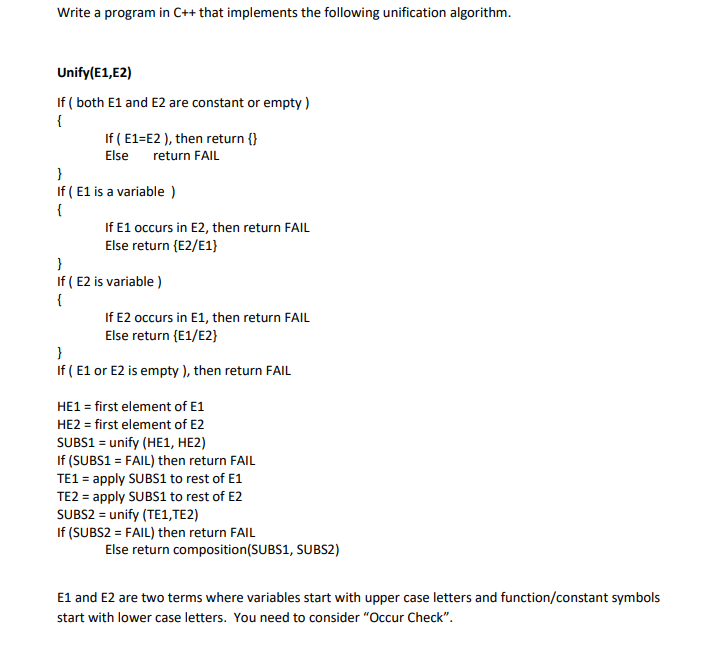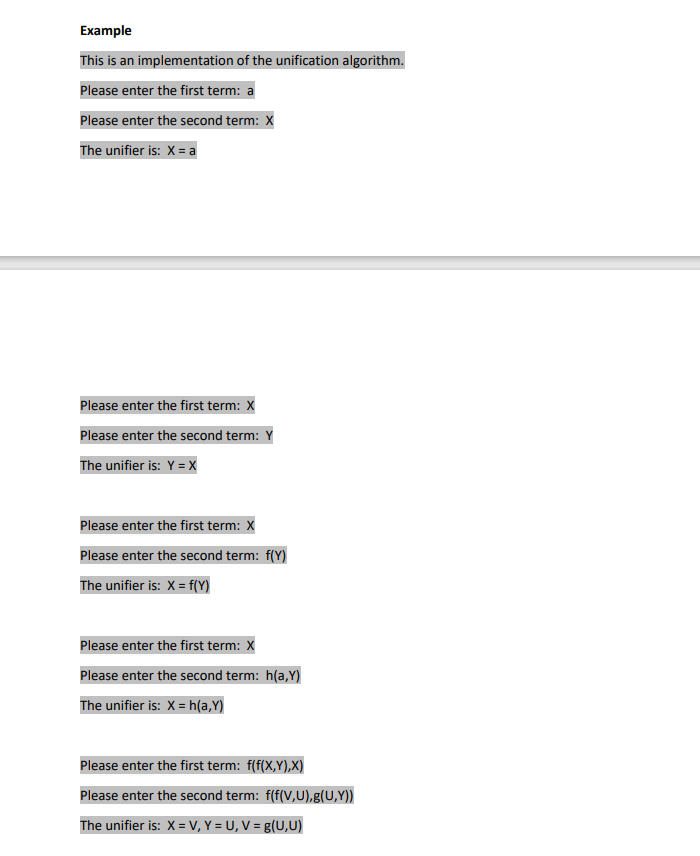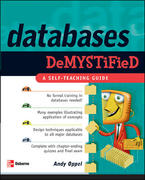Answered step by step
Verified Expert Solution
Question
1 Approved Answer
THE PROGRAM SHOULD FOLLOW SAMPLE OUTPUT. IT SHOULD RUN WITH NO ERRORS (IF CLASSES ARE USED PLEASE INCLUDE THEIR CODE AS WELL) Write a program


THE PROGRAM SHOULD FOLLOW SAMPLE OUTPUT. IT SHOULD RUN WITH NO ERRORS (IF CLASSES ARE USED PLEASE INCLUDE THEIR CODE AS WELL)
Write a program in C++ that implements the following unification algorithm. Unify(E1,E2) If ( both E1 and E2 are constant or empty) \{ If ( E1=E2), then return \{\} Else return FAIL \} If ( E1 is a variable ) \{ If E1 occurs in E2, then return FAIL Else return {E2/E1} \} If ( E2 is variable) \{ If E2 occurs in E1, then return FAIL Else return {E1/E2} \} If ( E1 or E2 is empty), then return FAIL HE1 = first element of E1 HE2 = first element of E2 SUBS1 = unify (HE1, HE2) If (SUBS1 = FAIL) then return FAIL TE1 = apply SUBS1 to rest of E1 TE2 = apply SUBS1 to rest of E2 SUBS2 = unify ( TE1,TE2) If (SUBS2 = FAIL) then return FAIL Else return composition(SUBS1, SUBS2) E1 and E2 are two terms where variables start with upper case letters and function/constant symbols start with lower case letters. You need to consider "Occur Check". Example This is an implementation of the unification algorithm. Please enter the first term: a Please enter the second term: X The unifier is: X=a Please enter the first term: X Please enter the second term: Y The unifier is: Y=X Please enter the first term: X Please enter the second term: f(Y) The unifier is: X=f(Y) Please enter the first term: X Please enter the second term: h(a,Y) The unifier is: X=h(a,Y) Please enter the first term: f(f(X,Y),X) Please enter the second term: f(f(V,U),g(U,Y)) The unifier is: X=V,Y=U,V=g(U,U)Step by Step Solution
There are 3 Steps involved in it
Step: 1

Get Instant Access to Expert-Tailored Solutions
See step-by-step solutions with expert insights and AI powered tools for academic success
Step: 2

Step: 3

Ace Your Homework with AI
Get the answers you need in no time with our AI-driven, step-by-step assistance
Get Started


